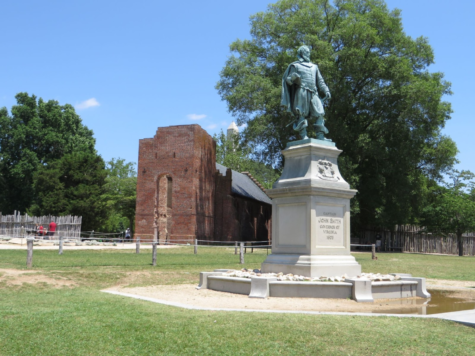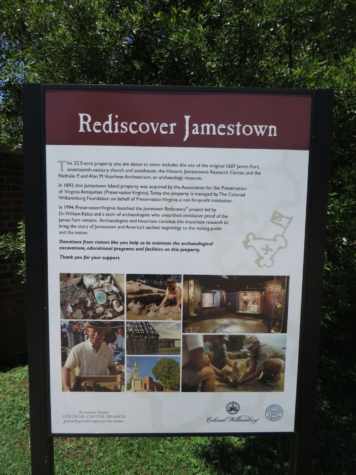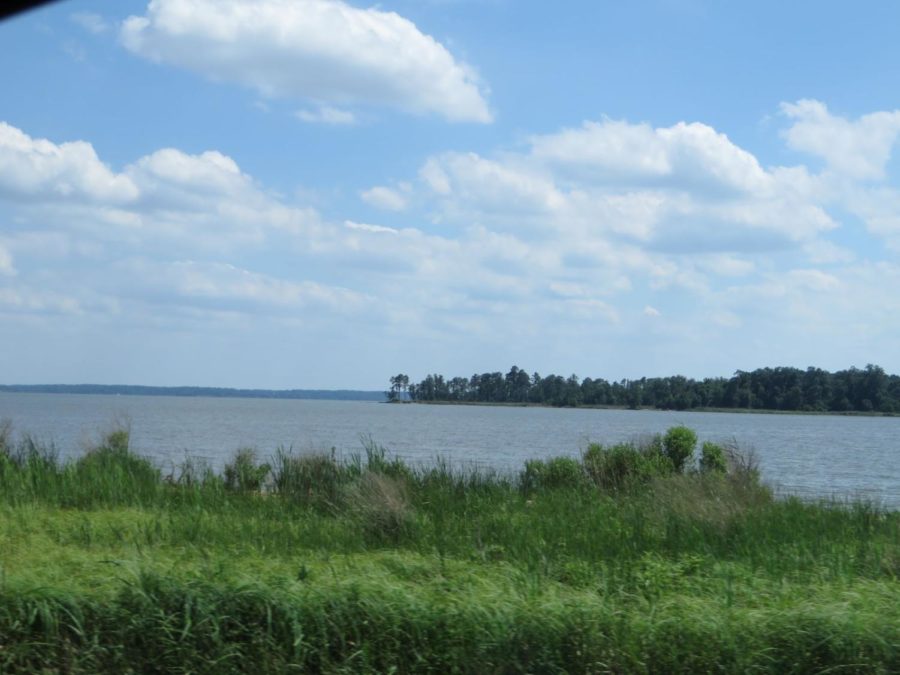Climate Change Strikes Again: The Historic Town of Jamestown is Flooding
The town that was the first permanent English settlement in North America is facing the effects of climate change.
Ken Lund from Reno, Nevada, USA, CC BY-SA 2.0
Jamestown is completely surrounded by water, so the threat of it going underwater is far higher than other places.
One of many history lessons taught in public middle school in the United States is about the English colonies of the New World, and the settlements that started with Jamestown, Virginia.
On May 14th, 1607, more than 400 years ago, 104 English men chose Jamestown, Virginia to be their settlement, marking the town as the first permanent settlement in North America. Colonizers chose the town for various reasons, but the most notable one is the James River. The river served as protection against Spanish ships that were sailing along the Atlantic coast, and it was a good way to travel back and forth between the Americas and England. However, now it seems like the very reason why Jamestown became a colony will be the reason it goes down.
In more recent years, the Jamestown river has been rising as a result of climate change, and experts say that the town may soon be completely underwater. In response, Jamestown was included in the climate change section of the ‘Most Endangered Historic Sites of 2022.’
The current situation of the town is grim. The James River’s water levels have been rising for many years, storms are becoming worse, floods are threatening homes and businesses, and the water won’t recede. If nothing is done soon, the town may be gone in the next few decades.
History of Jamestown
In 1607, colonizers founded Jamestown in East Virginia. The colony was first sponsored by the English trading company, Virginia Company with the hope of earning profit from it.
Captain John Smith became the leader of the settlement in 1608. His most notable act for the town was his “No work, No Food” policy. This policy means that if settlers did not work then they wouldn’t get any food, so they had to work to survive.

The town devolved into a disaster in no time. The James river was very dirty, and as a result, the town was heavily disease-prone. The colony faced many problems whether it was from disease or skirmishes with Native Americans. But ultimately it was also Native Americans who aided the colonizers when they were sick. The winter of 1609–1610 was named “The Starving Time” because of warfare between colonists and Native Americans, famine, and lack of food.
John Rolfe arrived at the town in 1612. When he arrived, he helped the town become a profitable venture with tobacco. It quickly became the cash crop for the Virginia Company. The town’s economic structure instantly became stable. On the other hand, some colonists were not happy about the tobacco business because of the tobacco only being sold to the English and the high taxes. Nathaniel Bacon is the one who led one of these rebellions. In September of 1676, Bacon and his followers set the town on fire. The rebellion died down when Bacon passed away that same year.
The Jamestown Rediscovery Project is a project that was made by Preservation Virginia in 1994 to find the remains of the original colony and fort. To this day, there have been more than three million artifacts found from the project.

Now, Jamestown is a historic site. It is one of three places considered the “Historic Triangle of Colonial Virginia,” along with Yorktown and Williamsburg.
How the flooding can be stopped
Storms are becoming more frequent and making a big impact on the water level in Jamestown. This isn’t the first time that Jamestown has been affected by the water either, since the western part of the settlement had already been eroded.
Katherine Malone-France, who is the chief preservation officer for the National Trust for Historic Preservation, told The Washington Post that “(They) have a five-year window to make an impact,” and that “this isn’t something that can wait 10 or 15 years.”
A sea wall, which are structures built to prevent erosion on shorelines, was built to combat the water rising, but over the past few decades, it has been becoming less effective. The current fight against the flooding is going to start by putting granite stones along the wall of the sea to try to stop the water from going on the island. Up until now, archaeologists have been using sandbags to cover up sites during rainfall, in order to make sure that nothing goes underwater.
What this means for us and why it is important
With each passing decade, the land and water temperature has increased by 0.14 degrees Fahrenheit. The rise in temperature comes from heat trapping gasses like carbon dioxide and methane blanketing the earth. It has made our weather warmer, sea levels rise, oceans more acidic, and it is also changing weather patterns.
Jamestown is the start of European colonization in North America, and in turn the start of the United States as well. The town holds the remains of not only the first settlers, but also of the Native Americans and the slaves from that time. The artifacts found in Jamestown are not only a crucial part of American history but also to some cultures, and if we lose them before we can dig them up, the story of these people and the fort will never be fully known.
The search for remains of the original colony in Jamestown has barely even started, as archaeologists are still finding many artifacts that each help them understand the events that happened hundreds of years ago. Just a few years ago in 2013, evidence of cannibalism was found, and in 2015, the remains of the first settlers were discovered. Year by year, there are more discoveries found in the site.
This isn’t the only place being affected by the horrors of climate change. Also included in America’s 11 Most Endangered Historic Places of 2022, is Olivewood Cemetery in Houston, Texas. It is one of the oldest African-American cemeteries in Houston, and is the final resting place to many enslaved African-Americans. The site is being endangered from weather-caused erosion that is damaging the burial ground.
Climate change is not only affecting our environment but our history, too. If we don’t take action for it soon, in a few decades there will be far more problems for us than artifacts being lost. Jamestown is one of many places being affected by rising temperatures, and it certainly won’t be the last if we keep going as we are now.
Climate change is not only affecting our environment but our history too. If we don’t take action for it soon, in a few decades there will be far more problems for us than artifacts being lost.
Rida Nuamah is a Copy Chief for 'The Science Survey' and enjoys writing about arts and entertainment. She finds journalistic writing appealing because...











